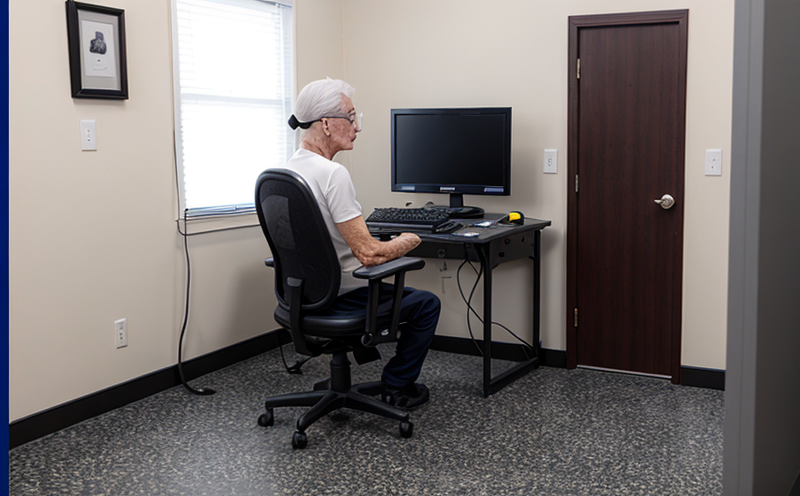Durability evaluation of upholstery fabrics under repeated use
The durability of upholstery fabrics is a critical factor in ensuring longevity and performance within various sectors such as automotive interiors, furniture manufacturing, and commercial spaces. We provide specialized testing to evaluate the wear resistance and aging characteristics of these textiles under conditions that mimic real-world usage scenarios.
Our test method simulates the repetitive stresses and environmental factors encountered during prolonged use by consumers or in industrial settings. This allows manufacturers and designers to make informed decisions regarding material selection, design improvements, and quality assurance. By understanding how fabrics degrade over time, companies can enhance their products' durability and meet stringent industry standards.
Our testing approach focuses on replicating the dynamic conditions that contribute to fabric wear, such as friction from furniture legs moving across surfaces or the constant pressure exerted by human bodies sitting in chairs. We use advanced equipment capable of simulating these conditions through controlled abrasion tests, tensile strength measurements, and accelerated aging processes.
One of our key strengths lies in providing accurate and reliable results that can help clients achieve regulatory compliance while also offering insights into potential areas for improvement. Our team consists of experienced professionals who stay current with the latest developments in textile science and testing methodologies.
| Test Parameters | Description |
|---|---|
| Abrasion Resistance | Evaluates fabric resistance to wear caused by rubbing or friction over time. |
| Tensile Strength | Metric for assessing the maximum force required to tear a sample apart. |
| Colorfastness | Determines how well pigments withstand exposure to light, water, and other chemicals. |
| Water Resistance | Measures fabric's ability to resist penetration by liquids. |
By thoroughly evaluating each aspect of a fabric’s performance under repeated use conditions, we ensure that our clients receive comprehensive data which can guide them toward developing more robust and reliable products. Our commitment to precision and accuracy ensures that you get actionable insights into your product's durability potential.
In summary, our durability evaluation service offers valuable information about the wear characteristics of upholstery fabrics used in various applications. This knowledge enables manufacturers and designers to enhance their offerings by addressing specific weaknesses identified during testing while ensuring compliance with relevant standards.
Scope and Methodology
The scope of our durability evaluation service includes assessing the resistance of upholstery fabrics against repeated use conditions that mimic real-life scenarios. This encompasses a wide range of factors such as friction, abrasion, stretching, and exposure to environmental elements like heat, moisture, and UV radiation.
| Methodologies | Description |
|---|---|
| Abrasion Testing | Involves rubbing the fabric against a specified surface at controlled speeds for extended periods to measure its resistance to wear. |
| Tensile Strength Testing | Measures the maximum force needed to break or tear apart the fabric under defined stretching conditions. |
| Aging Simulations | Exposes fabrics to artificial aging processes designed to replicate natural aging factors over shorter timespans. |
| Colorfastness Testing | Evaluates whether colors remain intact after exposure to light, heat, and other chemical treatments. |
The methodology employed ensures that all relevant aspects influencing a fabric's durability are considered. Our state-of-the-art laboratories house sophisticated machines capable of simulating the most demanding conditions found in everyday use environments. These tests provide quantitative data on wear and tear, enabling manufacturers to identify weak points early on so they can address them before production begins.
Our testing process adheres strictly to international standards such as ISO 16892:2017 for upholstery fabrics, ensuring consistency across all evaluations performed. This guarantees that the results obtained are comparable and reliable, providing valuable input into product development cycles.
Why Choose This Test
Selecting durability evaluation of upholstery fabrics under repeated use tests is essential for several reasons:
- Enhanced Product Quality: Understanding how your products behave over extended periods helps improve their overall quality and reliability.
- Regulatory Compliance: Ensures adherence to industry-specific regulations and standards, thereby avoiding costly penalties.
- Economic Benefits: Identifying issues early in the design phase can save significant costs associated with redesigning products later on.
- Innovation Opportunities: Insights gained from these tests often lead to innovative solutions that push boundaries further.
These evaluations are particularly crucial for companies operating within competitive markets where customer satisfaction plays a vital role. They allow businesses not only to meet but exceed expectations, fostering long-term relationships and brand loyalty among end-users.
Competitive Advantage and Market Impact
Evaluating the durability of upholstery fabrics under repeated use offers numerous competitive advantages that extend beyond mere compliance with regulations. Here’s why this service stands out:
- Premium Brand Reputation: Demonstrating a commitment to excellence through rigorous testing enhances brand reputation and builds trust among consumers.
- Differentiation from Competitors: By offering superior product quality, businesses can differentiate themselves in crowded markets.
- Innovation Leadership: Continuous improvement based on test findings positions organizations as leaders in innovation within their respective industries.
- Customer Retention: Satisfied customers are more likely to remain loyal and recommend your products or services to others.
The ability to accurately predict the lifespan of materials used in upholstery fabrics contributes significantly to maintaining high standards throughout the supply chain. This not only benefits manufacturers but also extends positive impacts downstream, influencing everything from retail sales strategies to after-sales support practices.





